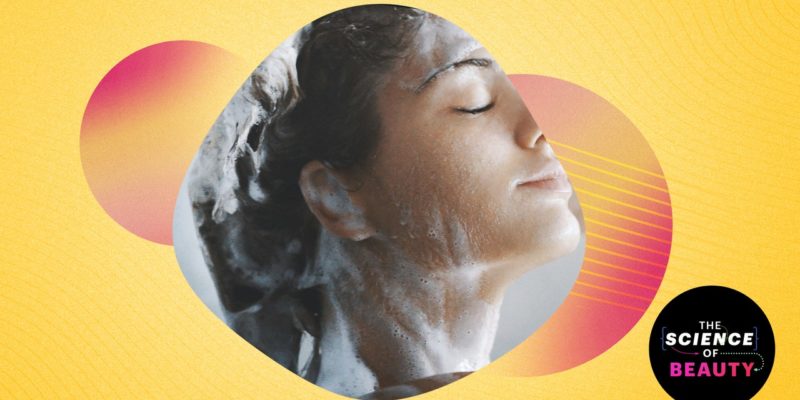
But how much a shampoo lathers caters more to consumer perception than actual need. “The richer the lather, the more the consumer thinks, ‘Ooh, this is working,’” says cosmetic chemist Ni’Kita Wilson during our episode. But in reality, since oil inhibits bubbles, the cleaner your hair, the more foam you’re likely to see — thus more lather doesn’t really mean your shampoo is “working”… it means your shampoo has already worked.
How does dry shampoo work?
While modern-day dry shampoo was invented in the 1940s, it wasn’t until the late 20th century that it was used in mainstream society.
Modern-day dry shampoo was invented in the 1940s as a way to cleanse your hair without using water. (One brand, Minipoo, marketed theirs as convenient for “surprise dates” and a way to refresh your hair if you’re sick in bed.) Then, a little more than a decade ago, dry shampoo got a real re-brand and was suddenly a go-to styling tool for creating voluminous hair looks at couture shows and adding texture to loose, Olsen sister-style waves.
Truthfully, the name itself is a bit of a misnomer. According to Wilson, dry shampoo doesn’t function the same way as traditional shampoo: the name simply refers to the end result, which is cleaner-looking hair. (With texture and volume being welcome side effects.)
Dry shampoo is often in an aerosol can and is sprayed onto the roots when styling. It works by using starch to soak up the excess oil and grease in your hair, giving it a cleaner appearance and extending your style so you won’t have to wash for an extra day (or two!). Pro tip: It takes five minutes for the dry shampoo to absorb the oil in your scalp, so spray it on, wait a few minutes, then comb it through.
But while it’s great for touching up, Wilson reminds us during the episode that dry shampoo is not a replacement for the real deal. Aside from truly rinsing away grime (some dry shampoos just cover it up), shampoo helps nourish the tissue around hair follicles, resulting in healthier strands, says Wilson. Plus, she adds, the act of massaging in actual shampoo helps boost circulation in the scalp.
Shampoo Ingredients to Look For — and Avoid
We established that most shampoos contain surfactants (like sodium lauryl sulfate or sodium laureth sulfate) to emulsify oil and dirt, preservatives (like parabens or sodium benzoate) to inhibit microbial growth, and fragrance. But there are a few other key terms to look out for when shopping for shampoo.